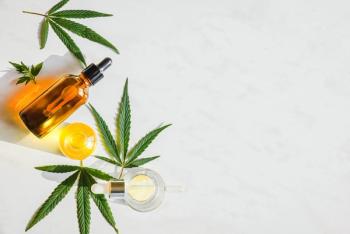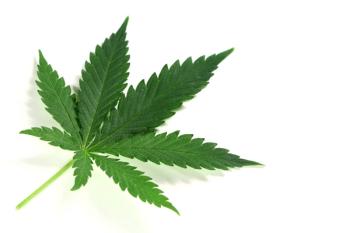
Cannabis Science and Technology
- September 2021
- Volume 4
- Issue 7
A Closer Look at the Rise of Psychedelic Medicine and Panacea Plant Sciences

David Heldreth, Founder and CEO of Panacea Plant Sciences, discusses the rise in interest in psychedelic medicine and more.
Decades ago, a relentless campaign of stigma and misinformation was unleashed upon cannabis. By coming together and sharing our personal journeys as well as medical and scientific findings we have begun to reposition cannabis as a medicinal, natural product. However, there still remains a very deep and pervasive stigma surrounding many other psychotropic natural products such as psilocybin mushrooms, ahayhuasca, mescaline, and peyote. There has been such an amazing increase in interest in psychedelic medicine that the Cannabis Science Conference is adding a Psychedelic Science Track for CSC West in Long Beach, CA (February 2–4, 2022). Join us and a group of key opinion leaders in psychedelic medicine to learn more about this emerging market.
For this installment of “Cannabis Crossroads”, I sat down with David Heldreth, Founder and CEO of Panacea Plant Sciences. Heldreth is a scientist, innovator, educator, and explorer helping to move psychedelic medicine and science forward. We discuss everything from the rise in interest in psychedelic medicine and his company, Panacea Plant Sciences, to the interesting parallels between cannabis and psychedelics. Heldreth also shared advice for those interested in getting into this emerging industry.
We have seen a rise in interest in psychedelics over recent years. Why has psychedelic medicine become a hot topic recently?
I think there has been an ever-increasing openness to speak about the current public health crisis surrounding mental health and addiction in our society. This is due to a combination of factors, but it faces all facets and pieces of society—from PTSD in veterans from war to LBGTQ+ victims of hate crimes or a worker at a lumber mill who had a back surgery and is addicted to the opiates the doctors over prescribed. These problems are difficult to treat and often resist the current treatment regiments. This has led people to seek new answers such as psychedelics. At the same time there has been a renaissance in scientific research on these very subjects. I believe the COVID outbreak has galvanized both of these topics at the same time with a large push to research something new in medicine and to treat the mental health consequences of quarantines. Society is hungry for new answers.
How did you get involved in psychedelic medicine?
My history with medicinal psychedelics mirrors my history with medical cannabis. I have had many surgeries and nerve pain issues from past injuries. Additionally, I have faced my own anxiety, depression, and PTSD issues due to things from my childhood. Cannabis, mescaline, psilocybin-containing mushrooms, LSD, DMT, ketamine, and MDMA at different times in different ways provided what I needed in addition to therapy and group, family, and friend support. As such I was able to quit utilizing all the medications I was prescribed as a child and young adult from opiates, muscle relaxers, and related items for the pain-related issues along with quitting all benzodiazepines and other medications for the PTSD, anxiety, and other conditions.
These profound experiences and treatments led me to want to understand how these items worked. With a background in marine biology and aeronautical engineering, I began applying myself to learning what research did exist and then cultivating and exploring these medicines directly. Over time this led me to form companies, develop technologies, and create methods to treat mental health and other medical conditions and also improve methods to create these medicines.
How is Panacea Plant Sciences helping advance psychedelic science? Which psychedelics are you interested in? Are there any special projects that you are involved in that you wish to highlight?
Panacea Plant Sciences' (PPS) goal is to be the intel inside for psychedelics and natural medicines. PPS has developed a variety of technology and IP around the cultivation, extraction, isolation, packaging, shelf-life, and medical formulation uses of cannabis and psychedelic plants, fungi, lifeforms, and compounds. We are currently working with universities to develop unique non-heated delivery methods among other projects.
Panacea Plant Sciences is not focused on a single compound, plant, fungi, or treatment, but rather at being ahead of the pack in all of the fields and compounds with a goal to prepare the research, patents, and IP that other groups will then take to a final commercial use. We have projects relating to mescaline, DMT, psilocybin, MDMA, ketamine, LSD, and Shulgin compounds among others in motion.
I am most proud of our work with indigenous reciprocity. We have stated that we will work within the principles of the Nagoya Protocol, which is an international treaty to protect biodiversity and indigenous rights. Canada and the US are some of the only non-signatory nations. This is due to a desire to allow US companies to steal and pirate lifeforms from other countries.
Beyond this PPS has designated in perpetuity that 32% of our equity will be preferred shares that can only be held by indigenous groups and 401c3's which are associated with them or related environmental groups. These preferred shares have voting rights and 10x divided rate so that they can hold them and draw funds from dividends for any projects they see fit in their communities. The money will also help fund environmental work to protect the species involved.
For mescaline projects we are currently working and speaking with Sia. Sia is the Mother Church of the Comanche Native American Church 1918 Charter Association (NAC). NAC and related groups are allowed to possess and utilize Lophophora williamsii under federal law. Sia was founded by Wahathuweeka William Voelker and Kwihnia makwetsoi okweetunia: aka Troy. Sia: The Comanche Nation Ethno-Ornithological Initiative is a traditional NAC organization whose mission is the preservation of the Eagle and Peyote through cultural understanding in history, science, and spirit. Sia is a cultural breeding center with many world firsts in natural and artificial breeding. All molted feathers go to the only feather tribal repository in the US to promote indigenous spiritual sovereignty for 574 tribal nations. Sia is the official repository and archive for the history, culture, and spirit of the Comanche and Numunuh people.
We are also lucky enough that we have Dr. Martin Terry as an advisor. He is currently licensed by the DEA for work with Lophophora williamsii. Dr. Terry has been a leading researcher for Lophophora williamsii for several decades.
Psychedelic science faces stigma similar to cannabis. Do you see this changing over the next decade? What will need to happen to make psychedelic science more accepted and respected?
Similar to my own path, I believe that cannabis and psychedelics have many parallels. I think that working on getting decriminalization bills, as well as legalization bills passed across the country in states and cities is going to be key. At the same time research, and even more directly research with human patients, I believe will be a big part in changing the narrative. As people see others become healed by these medicines it changes their view of them. Just recently Texas passed a bill or law that will begin research for psychedelics and PTSD. This is the kind of thing I think will spread across the country and lead to the changes we want.
Do you have any advice for others looking to get into the psychedelic science space?
Be patient and don’t expect anything to happen quickly. Research and read as much as you can about the industry and the science. I recommend Google Scholar (scholar.google.com) and Sci-Hub as resources for anyone wanting to learn about the science in the cannabis or psychedelic spaces. Pick a path as well. What do you want to do in psychedelics? Are you a grower, extractor, formulator, doctor, facilitator, marketer, web designer? There will be needs for many types of people and roles. Once you figure those pieces out, be persistent and then lobby and advocate at your local, state, and federal government. That is how we protect psychedelic medicines and how you connect with others who are like minded.
We just announced a Psychedelic Science Track at our 2022 Cannabis Science Conference West in Long Beach, CA, and we hope you will join us and share your data!
I hope that we have some early data from some of our projects to present with you in 2022. The DEA and governments are slow, so parts of this are out of our hands. However, currently things are moving at light speed for this industry!
Psychedelic medicine is a quickly emerging industry and I’m excited to see more advancement in this field. I’d like to thank David for sharing a closer (and personal) look at the rise of psychedelic medicine and science. I believe this is a topic that we’ll be seeing a lot more information and data on soon.
About the Interviewee
David Heldreth is a patented inventor as well as the founder and CEO of both Panacea Plant Sciences, a biotechnology company developing a portfolio of cultivation and related IP and patents around the cannabis plant, psychedelic life forms and formulations; and Ziese Farms, a hemp food company which has led the way with FDA allowances for hemp microgreens. He is also a former Chief Science Officer of a natural products company focused on terpene formulation. He testified at the historic FDA hearing on cannabis, CBD, CBG, CBC, and terpenes in our food supply on May 31, 2019. He is a leading scientist, inventor and educator in the cannabis and psychedelic communities.
About the Columnist
Josh Crossney is the columnist and editor of “Cannabis Crossroads”
and a contributing editor to Cannabis Science and Technology magazine.
Crossney is also the president and CEO of Cannabis Science Conference.
Direct correspondence to:
How to Cite this Article
J. Crossney, Cannabis Science and Technology 4(7), 14-15 (2021).
Articles in this issue
over 4 years ago
Cannabis and Hemp Tableting Challengesover 4 years ago
Does Light Spectrum Alter Plant Transpiration Rates?Newsletter
Unlock the latest breakthroughs in cannabis science—subscribe now to get expert insights, research, and industry updates delivered to your inbox.




